Painting & drawing blog
HOW TO CHOOSE A CANVAS
Tips for beginners in oil and acrylic painting
If you’re new to painting, you fortunately don’t have to stretch, size or prime your own canvas! Art shops and online stores sell pre-prepared canvases in different shapes and sizes which are all ready for you to work onto.
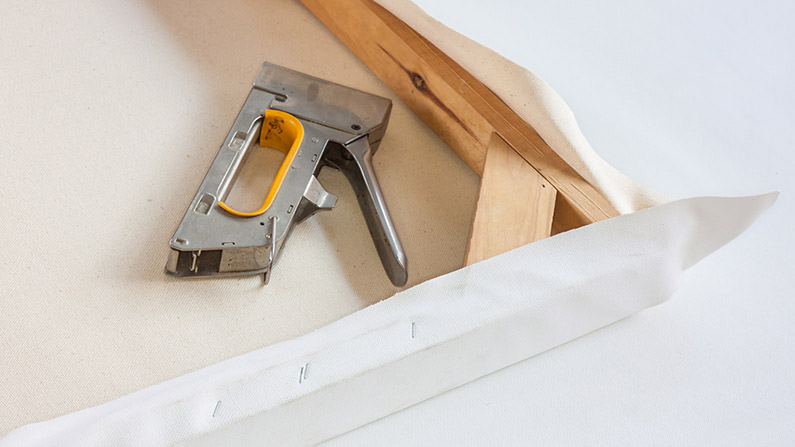
In this post we’ll look at all the features to look out for when buying a pre-stretched and pre-prepared canvas in an art shop. We’ll also cover ‘canvas boards’ and ‘canvas panels’, and consider when it might be useful to work onto these surfaces as an alternative to a traditional canvas (you can use the links to jump straight to those sections if you like)
There are no paid links in the post, just some independent suggestions for useful products or suppliers.
STRETCHED CANVASES
Faced with the vast range of canvases available you might wonder why some are so much more expensive than others, when they all look pretty much the same! Few differences will be obvious on casual inspection. These days you can buy extremely cheap stretched canvases in places like Hobbycraft and I’ve even seen them in some homeware stores. However if you buy a canvas from somewhere that’s not a proper art store it’s probably going to be of a quality even below ‘student’ grade and may not even be made from pure cotton but instead from a blend of cotton and cheap synthetic fibres.
In an art shop or online art store there will be a choice between ‘student’ ranges and ‘artists’ or ‘professional’ grade canvases. Sometimes student ranges may be given a name such as Essentials, Academic or Studio which tells you that they’re being marketed at beginners or as a cheap ‘practice’ canvases, whilst better quality ranges may be labelled Professional or Premium. However if the title doesn’t give any clue then price may be the only reliable guide to likely quality.

Let’s now look at some of the available choices between different sizes, thicknesses and materials before considering which other qualities make a good canvas.
The size
In the UK canvases are most commonly measured in Imperial (inch) sizes but some may have their measurements given in centimetres, or sometimes in both. Cheap canvases will often conform to the European the ‘A’ sizes of A4, A3 or A2, but more expensive brands are unlikely to.
If you want to work on a rectangular canvas my advice would be to avoid anything with a very ‘letter-box’ shape because the proportions aren’t very pleasing. A canvas whose dimensions conform to an ‘A4’ size will be much more rectangular and less satisfactory than an 8×10 inch size, which has a closer width-to-height ratio.
The thickness and the stapling
You’ll also need to decide what thickness of canvas you prefer. Choices range from a standard slim canvas with a depth of a couple of centimetres to very chunky, deep-sided canvases of up to about 4cm (around one and a half inches). If you intend to hand your canvas straight on the wall without framing it then a thicker canvas will look nicer, but if you intend to frame your painting then a thinner canvas is preferable.
If you are going to hang your painting unframed, make sure you buy a canvas where the fabric has been stapled on the back rather than on the sides so that the staples aren’t visible: this is known as a ‘gallery wrap’. The canvas in the picture at the top of the post is an example of a gallery wrap.
Cotton canvas vs linen
Canvases will usually be made from either cotton (known as ‘cotton duck’, from the Dutch word ‘doek’ meaning cloth), from linen, or occasionally from ‘poly-cotton’ which is cotton with a small percentage of polyester added to it.
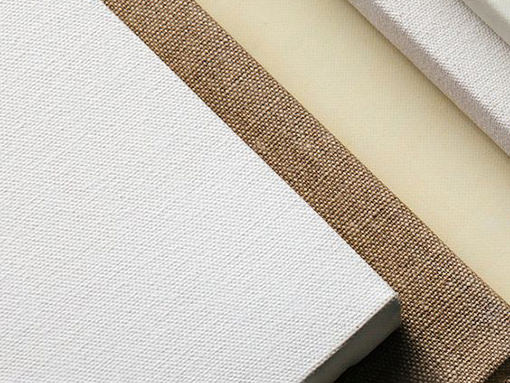
Cotton duck is the least expensive type of canvas fabric. Cotton fibres are relatively thick and whilst you can certainly buy a fine textured cotton canvas, it’s difficult to find an extra fine option in cotton. Cotton canvases also come with rough or extra rough texture options. These would be harder to source in a linen canvas which typically only comes in medium, fine or extra fine texture.
Linen canvases are darker in colour and are particularly strong and usually especially smooth. They are also more expensive because linen is harder to process into fibres and then stretch evenly over a frame. Linen canvases are popular with professionals for their finer threads, tight weave and for the natural linseed oils present in their fibres which create a good degree of elasticity. This doesn’t necessarily mean that linen canvases are better, it’s simply a matter of personal preference and there is certainly nothing wrong with a good cotton canvas especially if you actively prefer a rougher more textured weave.
It is true to say that linen canvases are slightly more stable than cotton varieties because the linen fibres are less absorbent, giving a greater resistance against mould and mildew and making them less prone to contracting and expanding when exposed to moisture in the air. This may be a factor if you’re looking for a canvas with the very best archival qualities.
Poly-cotton blend canvases are less common than cotton duck or linen. Jacksons stock one or two types. Poly-cotton canvases are more stable than plain cotton canvases because the added polyester content gives them extra strength and ‘spring’ and helps them to stay tight. A poly-canvas can offer a smoother (sometimes ultra-fine) surface because its threads are finer and are woven more tightly. The surface is very uniform with little irregularity, and this may be desirable to some whilst others will prefer the natural textural variations of a pure cotton canvas.
The weave and the weight
The texture of a canvas is dependent on how tightly the fibres have been woven together. The label on a canvas may not state what sort of texture it has, and you’ll have to judge just by looking. Cotton canvases most typically come with a medium texture whilst linen canvases will usually come in a fine weave. You’ll also see a wide range of advertised textures starting with ‘no grain’ which is nearly as smooth as paper right up to ‘extra rough’ which will give you an extremely textured finish.
If you want a really minimal texture so that the weave barely shows through your paint layers then a linen canvas or poly-cotton canvas will be the best option for you because it will not only be more tightly woven but will also be more likely to be made from finer yarn. Extra fine linen canvas is sometimes known as ‘Portrait Linen’ . This is because for detailed portraiture work you would want a very smooth surface to paint onto.
Although canvases may often be sold by the weight of the fabric (given in grams per square metre) weight is not a clear-cut guide either to the texture or the quality of the canvas. In general you’ll find finer textured canvases being made from finer yarn and coarser ones from thicker yarn. However a heavyweight canvas made with thinner but slightly more tightly woven threads could be heavier than one made from thicker yarn that’s more loosely woven.
Linen canvases are more lightweight than cotton duck, but they are likely to be stronger because of the natural strength of the fibres. Therefore weight doesn’t always equate to strength. However as a general rule you’ll find that ‘student’ grade cotton canvases will typically be light due to a combination of loosely woven thinner threads and a minimal number of priming layers. If a canvas like this feels super-light it may suggest that the brand is particularly cheap and basic in quality.
The stretcher bars
The stability of the wood used to make the stretcher bars that the canvas fabric is wrapped around is important for maintaining the shape of the canvas amidst climactic changes of heat, cold or humidity. The quality of the stretcher is dependent on how expensive a canvas you buy. A cheap canvas is likely to have stretchers made from a soft wood such as pine and be given minimal strengthening treatments.
A better canvas will use kiln-dried stretchers to create maximum warp resistance and will be properly ‘finger jointed’ at the corners like the canvas below. Many layers of lamination will be applied to protect it against bowing and to discourage acid transfer to the canvas from the wood: a problem known as ‘stretcher burn’. An ‘acid-free’ label on a canvas would imply that the wood of the stretcher has been well laminated.
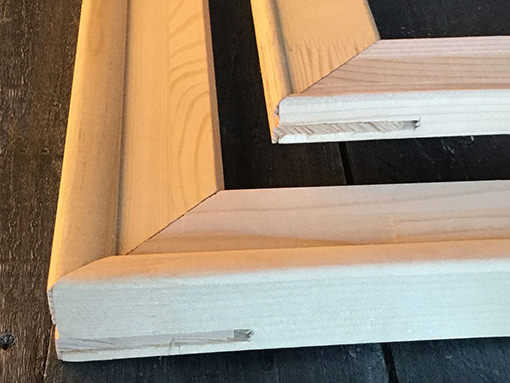
Photo credit: jacksonsart.com
The most expensive canvases may be made with hardwood or aluminium stretchers, or with wood that has been reinforced with aluminium inserts. Whatever material a stretcher is made from, it should have a rounded profile so that the canvas is smoothly and evenly stretched over it and doesn’t make an imprint on the fabric. Above you can see an example of some stretchers by Jacksons with suitably softened edges. This feature is something that the very cheapest canvases may lack.
The tightness of the canvas
One very obvious problem you’re likely to encounter with a cheap canvas is a certain slackness where the canvas hasn’t been pulled tightly enough over the frame. This may not be immediately apparent, but you may notice it when you start painting on it. It’s most likely to be a problem with a larger painting where the weight of the paint layers can start to loosen the canvas fibres.
Not everyone values the tightest possible canvas and some may actually prefer a bit of slack, but in general most people like to paint against a fairly taught surface that resists the pressure from your brush. A decent quality canvas should come with a little bag of ‘canvas keys’ or ‘wedges’ stapled to the back of the frame. These keys are small pieces of wood that you can insert into slots in the corners of the canvas frame and tap in with a hammer to tighten it up. Jacksons has a good tutorial on how to use the here. Ironically it’s the very cheapest canvases that have the most need of tightening that may not come with keys included.

Winsor & Newton’s basic but respectable ‘Classic’ range of frames come with keys, whilst their more expensive ‘Professional’ range of canvases come with an innovative device that they call a ‘Pro stretcher’. This is fitted to each corner on the reverse of the frame and has a screwhead that you simply tighten with a screwdriver to adjust the tension to your liking. Here’s a still from their video demo.

Priming
Most pre-stretched canvases, canvas boards and canvas panels will come pre-primed. Priming serves a number of purposes. It protects the canvas by providing a barrier between the fibres and the paint layers so that the paint doesn’t sink straight into the fibres and rot them, and it ensures better adhesion of those paint layers. This is particularly important for oil painting where the slow drying oil content would cause acid-damage to the canvas fibres if they weren’t protected.
Technically you don’t absolutely have to prime a canvas in order to paint onto it with acrylic paint: however, priming also smooths the surface to cover irregularities in the weave and tightens the canvas, adding a rigidity and stability to the paint layers which may both be advantageous to the acrylic painter too. A white priming layer will also limit the absorption of the paint into the fibres, giving maximum reflectivity and vibrancy.
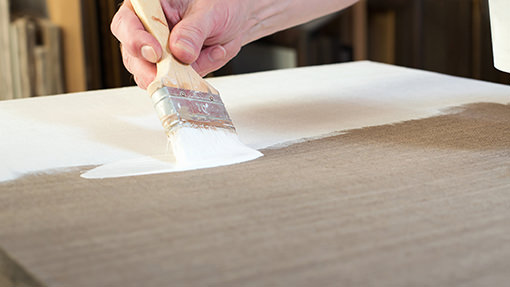
Most canvas labels will proudly state that the canvas has been ‘Triple primed with three layers of gesso’. This is a somewhat misleading description that confuses many beginners. True gesso is a ‘glue ground’ which is a combination of an animal skin binder (usually rabbit skin glue) and gypsum. It was was used during the medieval period to give a preparatory undercoating to wooden panels, the traditional support for oil paintings at the time. When fabric canvases gained in popularity, gesso was also applied as a primer to these as a thin layer, underneath a layer of oil. These days however it is recognised that this rabbit skin gesso is a major cause of cracking in oil paintings on canvas.
Therefore, when you see ‘Triple Primed with Gesso’ advertised on a canvas label today, it doesn’t refer to true gesso at all but to a modern acrylic primer (sometimes called ‘acrylic gesso’) which is an acrylic resin mixed with a white pigment and a filler such as chalk. Some manufacturers will describe canvases primed with acrylic primer as being ‘Universal Primed’ because an acrylic-primed canvas can be used for painting on with either acrylic or oil paints.
Any canvas which doesn’t state that it is at least ‘triple primed’ is best avoided, because the priming layer will be so thin that the paint may not adhere well and it may feel overly absorbent or too slick and shiny, depending on the priming used. You’ll also get an uneven, inconsistent surface and the canvas tension may feel too loose. Many people who do buy commercially primed canvases prefer to add further supplementary coats of primer on top before they start painting, but this is quite an effort that will require each layer to be properly sanded down.
Some artists working with oil paint believe it is better to paint over an oil-based primer rather than acrylic primer, due to some uncertainty about the future stability of the paint layers applied on top of acrylic priming – a question that hasn’t been satisfactorily answered yet. You can quite easily source ‘oil primed’ linen canvases if this is of concern to you. However most beginners will be perfectly happy with a canvas primed with a universal acrylic primer.
Unprimed canvases
Some people prefer to paint straight onto canvases which are completely unprimed, allowing the colour and the texture of the fabric to remain visible in parts. However whilst a priming layer may be omitted, it’s still vital for a canvas to be ‘sized’ in order to protect it from rotting. Look for a ‘Clear Glue Sized’ canvas, sometimes also known as ‘Clear Gesso’ priming. Unprimed canvases like this will usually be made from linen because it has a nicer, darker colour than cotton duck. The size applied may be either rabbit skin glue or a universal acrylic primer – check the manufacturer’s information online if you want to know which.
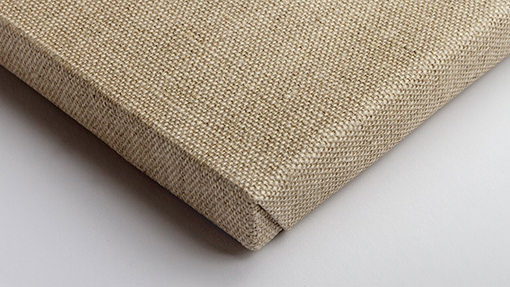
‘Belle Arti’ Universal Clear Glue Primed linen canvas. Photo credit: jacksonsart.com
CANVAS PANELS AND CANVAS BOARDS
These options are for people who prefer to paint onto a harder surface than a canvas, but still like the texture that a cloth canvas provides. Canvas boards and panels are also cheaper alternatives to a traditional stretched canvas.
Canvas boards are made from a layer of canvas which is glued to a thick piece of cardboard and sheared (trimmed) all the way round. They are generally designed for working outdoors ‘en plein air’ (due to their lightness and portability) or for quick studies. Often sold in multipacks they may be marketed to students as an economical alternative to stretched canvases, in which case their quality will be fairly low with a thin lightly primed canvas layer stuck to a flimsy board that may warp easily. The thinness of the priming also makes them very absorbent.
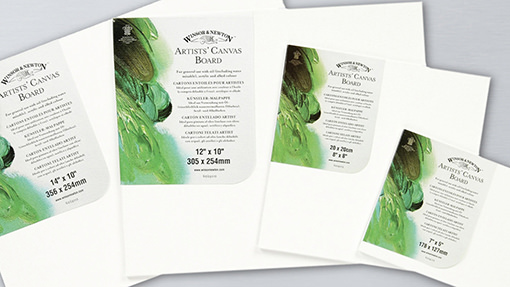
Due to the quality of materials that canvas boards are usually made from, you are unlikely to find many that meet the best archival standards. Jacksons sell a variety of slightly better quality canvas boards made with a choice of cotton or linen canvas and with universal or oil priming. Some are made with stronger MDF, rather than compressed card.
However your best bet for something stronger and more archival is a ‘canvas panel’ which will be made with a tempered hardboard core. Sometimes the terms ‘board’ and ‘panel’ are used a little interchangeably so price will be your best guide as to which is which, since hardboard panels will be considerably more expensive than cardboard ones. Canvas panels are sometimes called ‘Gessoboard’ panels because like canvases they will typically have been treated with universal acrylic primer. You can also find clear glue-sized panels that are unprimed.
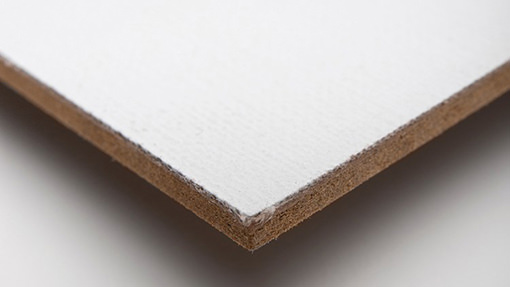
Canvas panel. Photo credit: jacksonsart.com
Like canvas boards, very good quality archival canvas panels can be difficult and expensive to obtain in the UK. Jacksons’ panels use a pH neutral glue to stick the canvas to both their boards and panels, in order to protect the fabric from acid damage leaching from the backing board. A company called Fredrix also make good archival linen panels, available online.
© Article rights reserved. Drawn portraits by artist Anna Bregman
CATEGORIES
DRAWING PEOPLE
DRAWING ANIMALS
DRAWING MATERIALS
OIL PAINTING
WATERCOLOUR
PAINTING MATERIALS
FRAMING

